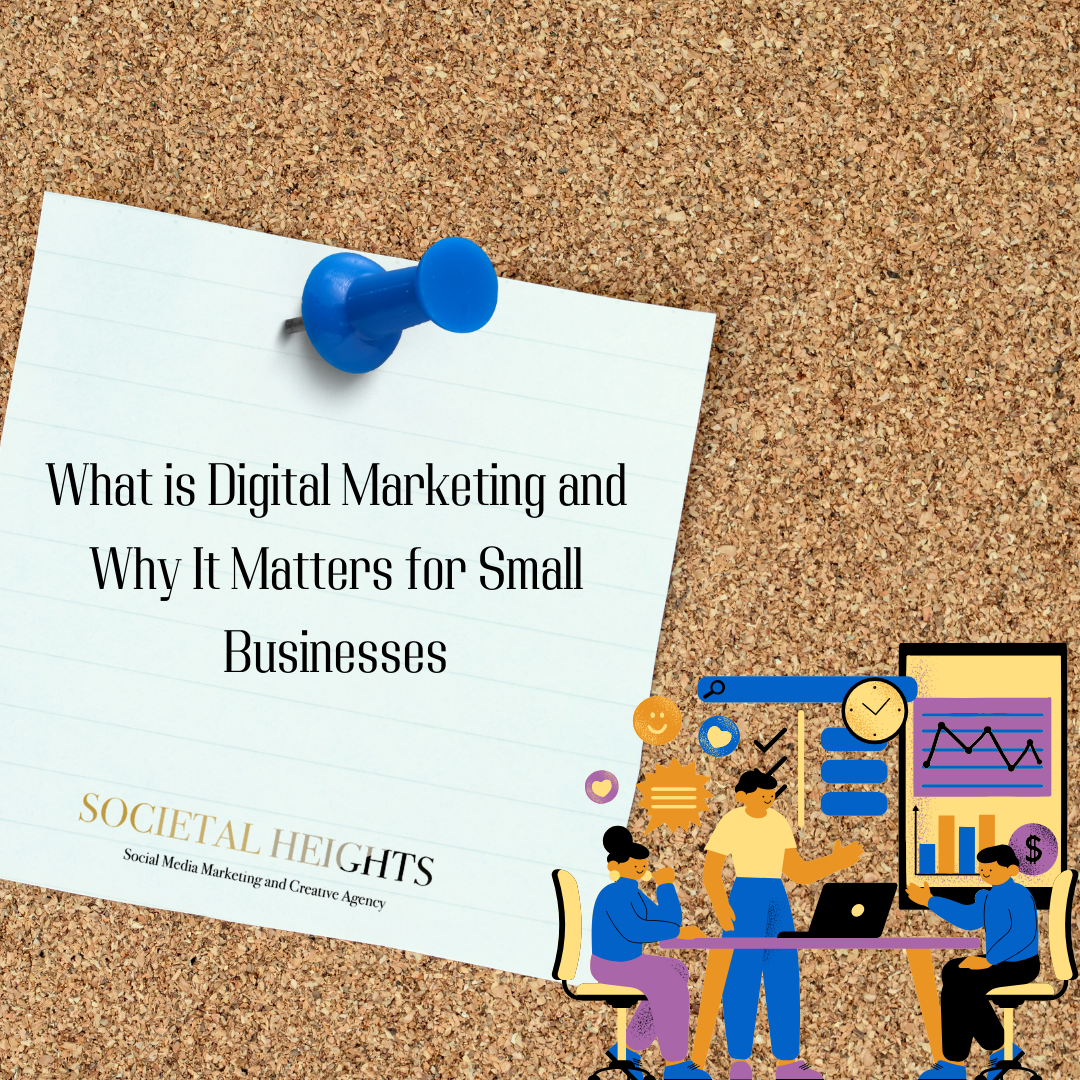Digital marketing is the practice of promoting products or services using online channels. That includes social media, email, videos, online ads, and more. Mailchimp says “if a marketing campaign involves digital communication, it's digital marketing” – and that is a pretty good definition.
But why should you tap into digital marketing?
For small businesses, it offers a cost-effective way to reach a broader audience, build brand awareness, and drive sales. Especially social media marketing offers a high ROI (Johnson, 2025). Unlike traditional marketing, digital marketing provides real-time data and insights, allowing businesses to adjust strategies for better results (McClatchy Media, 2025).
Key Components of Digital Marketing
-
Search Engine Optimization (SEO): The process of improving your website’s visibility on search engines like Google by optimizing content, keywords, metadata, and site structure. Effective SEO strategies help attract organic traffic, increase rankings, and improve user experience, ultimately driving more engagement and conversions.
-
Social Media Marketing: Engaging with your audience on platforms like Facebook, Instagram, and LinkedIn can help you build relationships and drive conversions.
-
Email Marketing: A strategic approach to sending personalized and targeted emails to engage with your audience, nurture leads, retain existing customers, and drive sales. This includes promotional campaigns, newsletters, automated follow-ups, and personalized recommendations to build relationships, enhance brand loyalty, and encourage conversions.
-
Paid Advertising: Running PPC (Pay-Per-Click) ads on platforms like Google Ads and Facebook Ads helps drive targeted traffic quickly.
How to Create a Digital Marketing Strategy
-
Define Your Goals: Determine what you want to achieve (brand awareness, lead generation, sales, etc.). What is it you want your digital marketing to do for you?
-
Identify Your Target Audience: Understand your ideal customer’s needs, preferences, and online behavior. You can build a buyer persona to get a better idea. Here is a link to a bunch of free persona templates.
-
Choose the Right Channels: Focus on the platforms where your audience is most active. Younger people will be more likely to use Snapchat, TikTok and Instagram, while older people may lean more towards Facebook.
-
Create High-Quality Content: Develop engaging blog posts, videos, and social media updates that provide value – quality “is the backbone of any successful social media strategy” (McClatchy, 2025)
-
Set a Budget: Allocate resources effectively across different digital marketing channels.
-
Monitor and Adjust: Track performance metrics and refine your strategy based on data insights. Tools for this will be mentioned below.
Tools and Resources for Small Businesses
-
SEO: Google Analytics, SEMrush, Google Trends
-
Social Media: Buffer, Hootsuite, Canva
-
Email Marketing: Mailchimp, ConvertKit, Constant Contact
-
Paid Ads: Google Ads, LinkedIn Ads
And there are many more!
Measuring Success and Optimizing Efforts
-
Website Traffic: Monitor with Google Analytics (there are others, but Google Analytics is very intuitive and covers a lot)
-
Engagement Metrics: Track likes, views, shares, and comments on social media
-
Email Open Rates and Click-Throughs: See which emails are more likely to be opened by your target audience
-
Conversion Rates: Assess how many leads turn into customers
-
Return on Investment (ROI): Compare marketing spend to revenue generated
Consistently analyzing these metrics helps small businesses refine their digital marketing strategies for ongoing growth and success.

